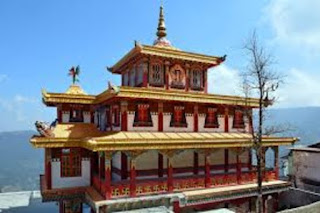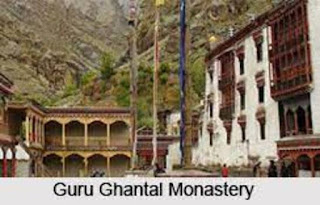The Ajanta Caves, a mesmerizing complex of rock-cut temples and monasteries, are one of India’s most celebrated cultural treasures. Among the 30 caves that form this UNESCO World Heritage site, Cave 6 stands out for its remarkable artistic and historical significance. Located in the rugged landscape of Maharashtra, India, the Ajanta Caves date back to around the 2nd century BCE, with Cave 6 specifically offering a profound glimpse into the evolution of Buddhist art and architecture.
The Ajanta Caves, including Cave 6, were excavated during two distinct periods: the first phase in the 2nd century BCE to 1st century CE and the second phase from the 5th to 6th centuries CE. Cave 6 was created during the latter period, a time when Mahayana Buddhism had gained prominence.
Cave 6, like other Ajanta caves, was a monastic residence and a place for meditation. The caves were initially carved out of volcanic basalt rock by Buddhist monks and served as both a spiritual retreat and a center for religious education. The intricate artworks and architectural features of Cave 6 reflect the sophisticated artistic techniques and religious fervor of the period.
Cave 6 is an exemplary model of early Mahayana Buddhist architecture and artistry. It is a chaitya hall, a type of prayer hall characterized by its semi-circular apse and an impressive vaulted roof. The cave’s façade is relatively simple compared to some other Ajanta caves, but its interior reveals a wealth of artistic detail and craftsmanship.
One of the most striking features of Cave 6 is its richly adorned central stupa, which is flanked by intricate sculptures and decorative elements. The stupa, an important Buddhist monument symbolizing the enlightened mind of the Buddha, is the focal point of the chaitya hall.
Cave 6 is a crucial site for understanding the development of Buddhist art and architecture. It illustrates the evolution of Buddhist iconography during the Mahayana period and provides a glimpse into the religious practices and artistic innovations of ancient India. The cave’s detailed frescoes and sculptures offer a window into the cultural and spiritual life of the period, revealing the ways in which Buddhist themes were expressed through art.
Moreover, Cave 6, along with other Ajanta Caves, plays a significant role in the study of ancient Indian history and archaeology. The site provides evidence of the extensive patronage of Buddhism during the period, as well as the skills of artisans who worked to create these enduring masterpieces.
Today, Cave 6 is part of a larger complex that continues to attract scholars, historians, and tourists from around the world. Efforts to preserve the cave’s intricate artwork and architecture are ongoing, as factors like weathering and human activity pose risks to its condition. Conservation initiatives aim to protect and maintain the cave’s historical integrity, ensuring that future generations can continue to explore and appreciate its significance.
In conclusion, Ajanta Cave 6 is a testament to the rich artistic and religious heritage of ancient India. Its stunning architecture and vibrant frescoes offer a glimpse into the world of early Mahayana Buddhism and the artistic achievements of its time. As a key component of the Ajanta Caves, Cave 6 stands as a symbol of India’s profound cultural legacy and continues to inspire awe and admiration.



